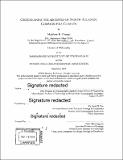| dc.contributor.advisor | Sarah B. Das. | en_US |
| dc.contributor.author | Osman, Matthew B. | en_US |
| dc.contributor.other | Joint Program in Oceanography/Applied Ocean Science and Engineering. | en_US |
| dc.contributor.other | Massachusetts Institute of Technology. Department of Earth, Atmospheric, and Planetary Sciences. | en_US |
| dc.contributor.other | Woods Hole Oceanographic Institution. | en_US |
| dc.coverage.spatial | n-gl---ln----- | en_US |
| dc.date.accessioned | 2020-02-10T21:40:17Z | |
| dc.date.available | 2020-02-10T21:40:17Z | |
| dc.date.copyright | 2019 | en_US |
| dc.date.issued | 2019 | en_US |
| dc.identifier.uri | https://hdl.handle.net/1721.1/123740 | |
| dc.description | Thesis: Ph. D., Joint Program in Oceanography/Applied Ocean Science and Engineering (Massachusetts Institute of Technology, Department of Earth, Atmospheric, and Planetary Sciences; and the Woods Hole Oceanographic Institution), 2019 | en_US |
| dc.description | Cataloged from PDF version of thesis. | en_US |
| dc.description | Includes bibliographical references. | en_US |
| dc.description.abstract | The Common Era (A.D. 1- present) represents a crucial period for climatic studies, documenting the timespan over which human activities have become an increasingly domineering force in shaping Earth's landscape, climate, and ecology. Direct, quantifiable records of climatic phenomena are severely limited over much of the Common Era, necessitating high-resolution, naturally-derived proxies to extend climatic insights beyond the satellite and instrumental era, particularly across remote high-latitude and maritime regions of the North Atlantic. Here, I use modem, data-driven and physically-based modeling approaches to gain new insights into North Atlantic climate variability from the Greenlandic ice core archive. First, I investigate the climatic fidelity of ice core glaciochemical climate proxies at the microphysical-scale. | en_US |
| dc.description.abstract | I show that several soluble chemical species - key among them methanesulfonic acid (MSA) - undergo rapid vertical migration through a super-cooled liquid-advection process along ice crystal grain-boundaries. I demonstrate that significant multi-year MSA changes occur only under low snow-accumulation and high-impurity-content conditions, thus mitigating the phenomenon over much of Greenland. Building upon these findings, I then investigate the cause of declining 19th and 20th-century MSA concentrations across the interior Greenland Ice Sheet. My results illustrate that Greenlandic MSA records provide a new proxy for North Atlantic planktonic biomass changes, illuminating a 10 ± 7% decline in marine productivity over the Industrial-era. I next present a new climate record from a previously-unexplored coastal ice cap in west-central Greenland. | en_US |
| dc.description.abstract | Using a physically-constrained ice cap flowline inversion model, I identify marked centennial-scale changes in coastal precipitation during the last millennium, including a ~40% increase in coastal precipitation since the industrial-onset. These changes are drastically larger than those observed from inland Greenland records, revealing enhanced sensitivity in west Greenlandic hydroclimates to regional Atlantic and Arctic-wide temperature variability. Finally, leveraging a compilation of nearly 30 annual-resolution Greenland water-isotope records, I isolate coherent signatures of atmospheric circulation variability to reconstruct changes in the North Atlantic eddy-driven jet-stream over the last millennium, exposing progressively enhanced variability during the past two-centuries consistent with amplified Arctic thermal-wind forcing. | en_US |
| dc.description.abstract | This thesis thus illuminates new Common Era climatic and ecologic changes, and expands the scope of the Greenlandic ice archive as proxies of the coupled North Atlantic climate system | en_US |
| dc.description.statementofresponsibility | by Matthew B. Osman. | en_US |
| dc.format.extent | 259, 15 unnumbered pages | en_US |
| dc.language.iso | eng | en_US |
| dc.publisher | Massachusetts Institute of Technology | en_US |
| dc.rights | MIT theses are protected by copyright. They may be viewed, downloaded, or printed from this source but further reproduction or distribution in any format is prohibited without written permission. | en_US |
| dc.rights.uri | http://dspace.mit.edu/handle/1721.1/7582 | en_US |
| dc.subject | Joint Program in Oceanography/Applied Ocean Science and Engineering. | en_US |
| dc.subject | Earth, Atmospheric, and Planetary Sciences. | en_US |
| dc.subject | Woods Hole Oceanographic Institution. | en_US |
| dc.subject.lcsh | Climatology. | en_US |
| dc.subject.lcsh | Temperature. | en_US |
| dc.title | Greenlandic ice archives of North Atlantic Common Era climate | en_US |
| dc.type | Thesis | en_US |
| dc.description.degree | Ph. D. | en_US |
| dc.contributor.department | Joint Program in Oceanography/Applied Ocean Science and Engineering | en_US |
| dc.contributor.department | Massachusetts Institute of Technology. Department of Earth, Atmospheric, and Planetary Sciences | en_US |
| dc.contributor.department | Woods Hole Oceanographic Institution | en_US |
| dc.identifier.oclc | 1138888721 | en_US |
| dc.description.collection | Ph.D. Joint Program in Oceanography/Applied Ocean Science and Engineering (Massachusetts Institute of Technology, Department of Earth, Atmospheric, and Planetary Sciences; and the Woods Hole Oceanographic Institution) | en_US |
| dspace.imported | 2020-02-10T21:40:16Z | en_US |
| mit.thesis.degree | Doctoral | en_US |
| mit.thesis.department | EAPS | en_US |
